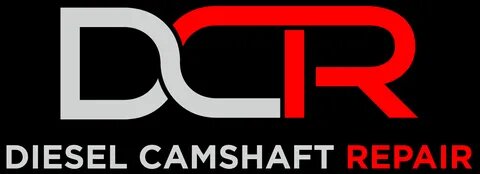Hydraulic and solid lifters are different valve lifters in diesel engines, each with their own advantages and disadvantages. They impact the camshaft’s performance, maintenance requirements, and suitability for various engine tasks. Choosing between hydraulic and solid lifters depends on aspects like engine performance, maintenance ease, and intended use.
Hydraulic Lifters
Performance
Hydraulic lifters adjust automatically to keep the valve gap at zero, making the engine quieter and smoother. This adjustment reduces the noise that usually comes from the valve train, making for a more pleasant driving experience.
Because of this smoother operation, the engine can work more efficiently, potentially using less fuel. Hydraulic lifters can also deal with the camshaft’s uneven movements, ensuring the engine performs well even when conditions change.
Whether you’re driving in cold weather or on a rough road, hydraulic lifters help your engine maintain consistent performance. Hydraulic lifters offer a combination of quiet operation, efficiency, and adaptability to different conditions.
Maintenance
Hydraulic lifters are known for being low maintenance, which is a big plus for engine upkeep. Their ability to adjust themselves means you don’t have to manually set the space between the valves as often.
This automatic adjustment cuts down on the time and money spent on maintenance over the engine’s life. Engines with hydraulic lifters need fewer repairs or adjustments, and they run smoother and more reliably. Hydraulic lifters save time and money on maintenance, making them a convenient option for diesel engine users.
Suitability
Hydraulic lifters are a good option if you want a quiet and smooth ride with less noise and vibrations from diesel engines.
This makes hydraulic lifters especially suited for vehicles used every day, like family cars or business vehicles, where comfort and reliability are key. They also shine in commercial settings, where downtime for maintenance means lost time and money.
In scenarios where keeping engine noise low is crucial—like in residential areas or for long drives—hydraulic lifters can make a big difference in driving comfort. Their suitability spans a wide range of applications where ease of maintenance, noise reduction, and smooth operation are prioritized.
Solid Lifters
Performance
Solid lifters, also known as mechanical lifters, provide a direct connection with the camshaft, allowing for very precise control over the engine’s valves. This precision is especially beneficial in high-performance situations where every millisecond of valve timing matters, such as in racing or high-speed driving.
Solid lifters enable better control, they can help the engine achieve more power and run more efficiently when it’s operating at high speeds. They are ideal engines designed for performance, where maximizing power output and efficiency is the goal.
Solid lifters are the go-to choice for performance enthusiasts looking for that extra edge in engine response and power, particularly at high RPMs.
Maintenance
Solid lifters need more upkeep than hydraulic ones because they don’t adjust on their own. You have to regularly check and adjust the gap between the valves to make sure the engine runs right. This means spending more time and money on maintenance.
This extra effort has a silver lining: it lets you fine-tune the engine more precisely. For those who prioritize performance, especially in racing or high-performance vehicles, the ability to make these adjustments can lead to better engine efficiency and power.
While solid lifters demand more from you in terms of maintenance, they offer the reward of enhanced control and potentially superior engine performance.
Suitability
Solid lifters are the preferred choice for racing and high-performance engines because they provide unmatched precision and can handle the intense stress and high temperatures these engines face.
Their design allows for a more direct interaction with the engine’s camshaft, ensuring valves open and close with extreme accuracy, which is vital for squeezing out every bit of power during competition.
However, this level of precision comes with a need for more frequent maintenance to adjust valve clearance, making solid lifters less ideal for regular, everyday cars. Additionally, the increased precision and performance can lead to louder engine noise, something that might not be desirable for daily driving.
In essence, solid lifters excel in environments where performance is the top priority but may not be the best fit for those seeking low maintenance and quiet operation.
FIVE SUMMARIZED KEY POINTS HYDRAULIC AND SOLID LIFTERS
Hydraulic Lifters
- Low Maintenance: They automatically adjust to maintain zero valve clearance, reducing the need for frequent tune-ups.
- Quiet Operation: Designed to minimize engine noise, making for a smoother and quieter driving experience.
- Improved Engine Performance: Helps in smoother engine operation and can enhance fuel efficiency due to reduced friction.
- Less Downtime: Their self-adjusting feature means less time spent on maintenance and repairs.
- Best for Daily Use: Ideal for vehicles used in everyday driving, commercial applications, and situations where comfort and ease of maintenance are priorities.
Solid Lifters
- High Precision: Offer more direct contact with the camshaft for improved valve control, crucial for high-performance engines.
- Requires Regular Adjustment: To maintain proper valve clearance, which can increase maintenance time and costs.
- Performance Advantage: The ability to finely tune the engine can lead to increased power and efficiency, especially at high RPMs.
- Suited for Racing: Often chosen for racing or high-performance applications where engine precision and durability under stress are key.
- Not Ideal for Everyday Use: Due to their higher maintenance demands and potential for increased engine noise, they’re less suitable for regular daily vehicles.
The choice between hydraulic and solid lifters in diesel engines depends largely on the specific requirements of the application, including desired performance level, maintenance capabilities, and engine usage.
Hydraulic lifters offer lower maintenance and quieter operation, making them suitable for most standard applications. In contrast, solid lifters cater to high-performance needs with their potential for increased power and efficiency, albeit at the cost of higher maintenance and greater noise.

